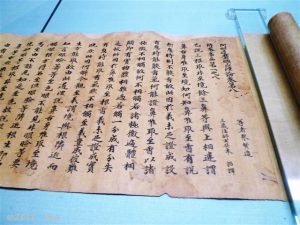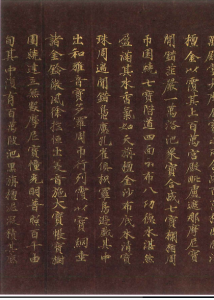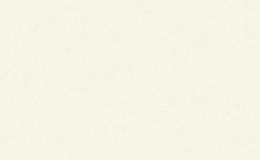
おはようございます。
Good morning.
How are you today?
いつも、ご覧いただいてありがとうございます。
Thank you for reading this blog.
本日は、奈良時代のサラリーマンの日常、その③です。
Today, the 3rd of Daily life of Japanese workers in 8C.
その①(No1)は、こちらでご覧いただけます。
その②(No2)は、こちらでご覧いただけます。
その②では、特別な試験を受けた、字の上手い方が写経生になったことをお伝えしました。
特別に選ばれた写経生の方々ですので、待遇はとってもいいんじゃないかと思いますね。
They ware selected because they ware excellent, so you should think their salary was very good.
でも、その仕事内容は、決して楽なものではなかったようです。
1人1日平均7枚、2~3日で1巻分を書き写したといわれています。
1枚は般若心経の写経程度の分量です。これを毎日毎日7枚です。
It is said each worker copied about 7 papers per day, in other words, he copied one volume in two or three days.
One sheet of paper is almost the same amount of copying of the most famous Sutra, Hannya Shin Gyo, which include about 270 letters.
気になる待遇はというと、
普通の用紙に1枚、墨で書くと5文。
the salary was 5 mon per 1 sheet.

金字経なら(金を膠(にかわ)にといて書く、難しい技術です)倍の10文。
If warker use Gold as ink, they had to use techniques, their salary was doubled.

1日平均7枚書いたら、日給にして、35文程度です。
The salary is on average 35 mon per day if they wrote 7 sheets per day.
しかし、現在の価値に、換算してどのくらいかは、不明です。肝心なところなのに、ごめんなさい。
However, it is unknown how much it converts to the present value.
では、ここでまたまた問題です。
Well, I have another question.
金字についての豆知識です。
書いたままでは、あまり輝きが無いので、磨きをかけて、文字を光らせます。
文字をキラキラ光らせるための道具とは何でしょうか?
It is a knowledge about letters which was written by Gold.
Actually, each letter is not shine when it was written.
To make the letters shine, workers polished the letters.
What is a tool to make the letters shine?
選択肢は、こちら
The options are below,
1.爪
2.髪の毛
3.猪の角
1. fingernail
2. hair
3. The horn of a boar
答えは、3.イノシシの角です。
the answer is 3. The horn of a boar
意外に、爪もいい仕事します。
I think fingernail is good, too.
では、次に気になる賞与、ボーナスのお話。
So, the next topic is bonus salary.
現代の日本では年に2回、会社員をしているとボーナスをもらえますね。
In contemporary Japan, if you are an office worker, you can get bonus salary twice a year.
私も会社員だった頃は、もらえました。あれがあったから10年会社員を頑張れたんです。
When I was a office worker, I got it, too.
Because I got such salary , I was able to continue office worker for the 10 years.
では、奈良時代のサラリーマン、写経生はボーナスをもらえたのでしょうか?
Then,
do you think was there any bonus salary system in Nara?
答えは、Noです。
The answer is NO.
むしろ怖い減給がありました。
There was rather a scary reduction in salary.
脱字があると、減給。
行が抜けると、減給。
When a letter goes out, reduction.
When a line goes out, reduction.
モチベーションが上がりにくい職業ですね。
Motivation is hard to rise in this situation, I guess.
具体的には、写経生が書いた後に、校正係が厳密にチェックして、誤脱を確認していました。
Actually, the proofreader strictly checked the mistake after writing.
では、問題です。
Then question again.
脱字1字につき、いくら減給されるのでしょうか?
How much will it be reduced when a letter goes out?
答えは、1文です。
The answer is 1 mon.
つまり、1文字抜けただけで、1/5枚分の減給でした。
That mean, if 1 letter was missed, it was a reduction of 1/5 sheets.
更に問題です。
1行抜けたら、いくら減給されるでしょうか?
Next question.
How much will you be reduced if you miss one line?
答えは20文です。
The answer is 20 mon.
1行に付き17字詰め、1枚に20数行ですから、1文字見落としただけで、4~5行書いた給与、
1行見落とせば4枚書いた給与が減額されていたということです。
Since it is packed in 17 letters per line and 20 lines in one sheet, so if you missed one letter, you lost the same salary as 4 to 5 lines, If you missed one line it means that the salary of one day was reduced.
やる気が損なわれやすい、労働環境ですね。
It is a labor environment that motivation tends to be impaired.
そうすると、休みたくなるのが人情です。
Then, it is humanity that they want to take a day off.
実際に、提出されていた休暇届が残っています。
Actually, there are remaining vacation applications that they had submitted.
休暇の理由で一番多いのは、病気です。
The most common reason for a vacation was sick.
座り仕事の職業柄からか、腰痛、足痛が目立つのだそう。
Because this work was a sitting job, back pain, foot pain are conspicuous.
その他にも、洗濯・屋根の修理で、休暇が認められている例もあるんだそうです。
Besides that, vacation was allowed by repair of washing and roofing.
洗濯機もない時代ですし、屋根の修理も自分でしなくちゃいけなかったんでしょうが、写経生側も、いろいろ理由を作って、何とか休もうとしていたのかもしれません。
1300 years ago, there was no washing machine, and workers had to repair the roof of their house by themself.
Worker may have tried to have vavations somehow by making various reasons.
では、
どんな休暇願の文書が残っているのでしょうか。
This vacation application is actually left from 1300years ago.
第60回「正倉院展」99頁図2 の臨書です。
要約すると、
「できものが大きくなって痛いので、出勤できません。」
という内容です。
ちょっと、大きい声では言いにくい内容ですね。
In summary, “I can not go to work, as the blotch gets bigger and it hurts.”
いかがでしたでしょうか。
How was it?
博物館に行く際に、参考になさってくださいね。
Please make it a reference when you go to a Japanese museum.
参考文献
下中邦彦編集『書道全集』9(平凡社1965)
名児耶明監修『決定版日本書道史』(芸術新聞社2009)
小松茂美編『日本書道辞典』(二玄社1987)
奈良国立博物館『第60回「正倉院展」』(仏教美術協会2008)



